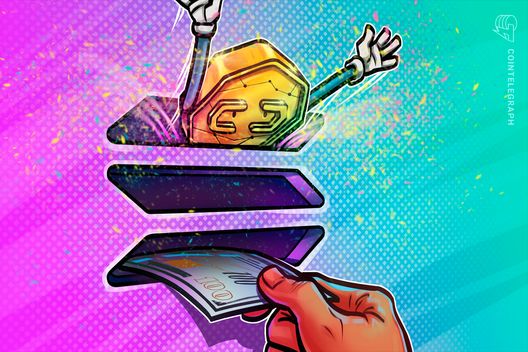In an exciting development for the cryptocurrency landscape, Itaú Unibanco, Brazil’s largest bank by assets, is contemplating issuing its own stablecoin amid a rapidly evolving regulatory environment. As the world’s financial institutions gradually embrace blockchain technology, Guto Antunes, the bank’s head of digital assets, highlighted the potential benefits of stablecoins and their role in enhancing transaction settlement. “Itaú has always had stablecoins on its radar,” Antunes stated at an industry event in São Paulo, underscoring the bank’s commitment to exploring innovative financial solutions.
“We cannot ignore the strength that blockchain has to settle transactions atomically,” Antunes added, signaling a shift towards digital assets in Brazil’s finance sector.
This renewed focus on stablecoins comes in the wake of a notable political turn in the United States, where lawmakers recently rejected the idea of a central bank digital currency (CBDC). Instead, they are promoting private stablecoin alternatives, aiming to uphold the dollar’s global dominance. In Brazil, the regulatory landscape is equally dynamic, with public consultations, such as Consulta Pública No. 111, aimed at integrating stablecoins into the existing financial framework. Antunes remarked that Itaú is patiently awaiting guidelines from the Central Bank of Brazil before launching any internal initiatives related to stablecoins.
Antunes also expressed apprehension regarding a proposed ban on self-custody in Brazil’s draft stablecoin regulations, a move that could significantly impact how consumers interact with their digital assets. Notably, major pension funds in Brazil have already been barred from investing in cryptocurrencies, highlighting growing regulatory scrutiny in the region.
As the conversation surrounding stablecoins intensifies, Itaú Unibanco’s exploration could mark a pivotal moment for crypto adoption in Brazil. With high stakes involved, the financial community is keenly watching how U.S. institutions navigate their own path in this emerging landscape and how it influences global attitudes towards innovative digital finance.

Itaú Unibanco’s Exploration of a Stablecoin
Itaú Unibanco, Brazil’s leading bank, is considering the creation of its own stablecoin amidst evolving regulatory discussions and the gradual movement of U.S. financial institutions into the cryptocurrency sector. Here are some key points related to this topic:
- Itaú’s Interest in Stablecoins:
- Itaú has recognized the potential of stablecoins for transaction efficiency.
- The bank is assessing the impact of U.S. financial institutions on the stablecoin market.
- Growth of Blockchain Technology:
- Blockchain is seen as a transformative technology for atomic transaction settlements.
- The increasing momentum of blockchain solutions could influence banking sectors globally.
- Regulatory Context in Brazil:
- Brazil’s regulators are currently reviewing how stablecoins might be integrated into the financial system.
- A public consultation (Consulta Pública No. 111) is underway to gather input on stablecoin regulations.
- Concerns About Regulation:
- There’s apprehension regarding a proposed ban on self-custody in Brazil’s draft stablecoin rules.
- The outcome of these regulatory discussions could heavily impact innovation within the country’s financial sector.
- Impact on Financial Sector:
- The decisions made by both Brazilian and U.S. regulators will shape the future of stablecoin usage.
- This shift could influence how consumers interact with banks and their financial assets.
“Itaú has always had stablecoins on its radar. We cannot ignore the strength that blockchain has to settle transactions atomically.” – Guto Antunes, Itaú
Itaú Unibanco’s Stablecoin Exploration: A Strategic Move in a Shifting Landscape
In a rapidly evolving financial ecosystem, Itaú Unibanco, Brazil’s preeminent banking institution, is taking an innovative step by considering the launch of its own stablecoin. This exploration is not just timely; it aligns with broader global trends where regulatory frameworks are beginning to accommodate digital currencies. Compared to other financial institutions globally, Itaú’s approach represents a forward-thinking strategy that could position it as a leader in the rapidly growing digital asset market.
Competitive Advantages: Itaú’s proactive stance comes at a time when U.S. banks are cautiously dipping their toes into the stablecoin waters. By observing the outcomes of these U.S. ventures, Itaú can potentially avoid pitfalls and refine its own launch strategy. Additionally, with Brazilian regulators currently assessing the role of stablecoins in the financial ecosystem through public consultations, Itaú is strategically poised to influence these discussions. The bank’s acknowledgment of the advantages of blockchain technology demonstrates a commitment to modernizing transaction processes, potentially making them more efficient and secure.
Moreover, the geopolitical dynamics surrounding stablecoins, particularly the U.S. Congress’s decision to favor private issuances over a central bank digital currency, have created a unique opportunity for Itaú. This environment could permit the bank to capture market share in Brazil and position itself favorably against international competitors who may be slower to adapt to local regulatory nuances.
Potential Disadvantages: However, the journey is not without risks. Itaú’s cautiousness about the pending regulatory environment reveals a significant downside; fluctuating regulations could hinder its ambitious plans. The proposed ban on self-custody in Brazil raises further concerns regarding user trust and operational flexibility. As the bank awaits clarity from regulators, it risks falling behind more agile fintech competitors who might capitalize on a more favorable or clearly defined stablecoin regulatory landscape.
This situation presents various implications for stakeholders. For investors and tech-savvy consumers, a well-implemented stablecoin could enhance transaction efficiency, providing a more stable means for digital asset management. On the flip side, traditionalists within Brazil’s financial sector might view this as a threat to existing banking practices, heightening tensions between innovative fintech and established banking systems.
As Itaú navigates this complex landscape, its decisions will be closely monitored, not just by local competitors but also by international players looking to Brazil for growth opportunities. The outcome of this exploration will set important precedents for the intersection of banking and digital assets in one of Latin America’s key markets.

















